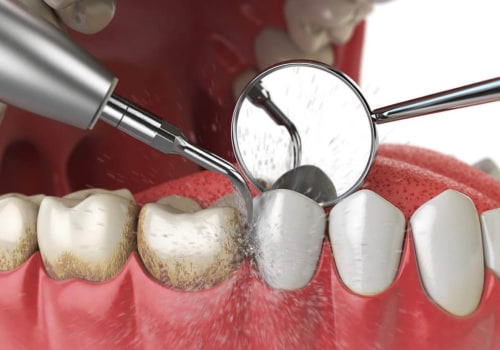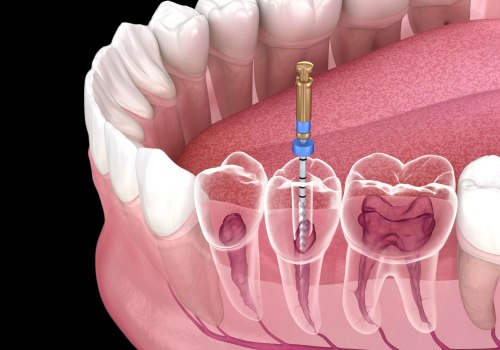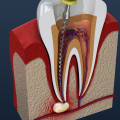A cavity is a common dental condition that can cause severe tooth decay and pain if left untreated. Fortunately, dental fillings are a simple and effective way to restore the health of your teeth. In this article, we'll discuss how dentists diagnose cavities and the types of fillings available for treating them. Before a dentist can decide on the best course of treatment, they must first identify the cause of the cavity. Dentists use a variety of tools to diagnose cavities, including x-rays, physical exams, and diagnostic tests.
Once they have identified the cause, they can discuss with you the type of filling that is best suited for your needs. Depending on the size and severity of the cavity, your dentist may recommend either a composite filling or an amalgam filling. Composite fillings are made from a mixture of plastic and glass particles and are used to repair smaller cavities. Amalgam fillings, on the other hand, are made from a combination of metals and are best suited for larger cavities. No matter which type of filling your dentist recommends, it's important to remember that dental fillings are designed to last for many years.
With proper care and maintenance, you can ensure that your teeth stay healthy and cavity-free for years to come. The first step in treating a cavity is to diagnose it. Your dentist will examine your teeth and use special tools to detect any decay. If a cavity is present, the dentist will then discuss treatment options, including dental fillings. Dental fillings are made from a variety of materials, including composite resin, gold, silver amalgam, and ceramic.
Your dentist will recommend the best option for your situation. The procedure to place a filling typically takes just a few minutes. First, the affected area is numbed with a local anesthetic. The decayed area is then removed and the filling material is placed in the cavity.
The material is shaped and polished so that it looks like your other teeth. The entire process usually takes about an hour. Dental fillings can be used to treat cavities of various sizes. Smaller cavities can typically be filled with composite resin while larger cavities may require metal fillings or crowns. Metal fillings are also used when more strength and durability are needed.
Gold and silver amalgam fillings are the most common type of metal filling. Ceramic fillings are another option and can be matched to the color of your teeth for a more natural look. It's important to take care of your dental fillings to ensure that they last as long as possible. Regular brushing and flossing are essential for keeping your teeth and gums healthy. You should also visit your dentist regularly for check-ups and cleanings.
This will help your dentist detect any problems with your fillings early on. Dental fillings are an effective way to treat cavities and restore teeth to their original shape and strength. They come in a variety of materials and can be used for small or large cavities. Taking proper care of your dental fillings can help them last for years to come.
Benefits of Dental Fillings
Dental fillings can provide a number of benefits to those suffering from cavities. Fillings can help restore the strength and appearance of a tooth, protecting it from further damage and decay.Fillings also help reduce pain and sensitivity in the affected area, reducing the need for more extensive treatments in the future. Fillings can also help to keep the affected teeth looking natural, as they are designed to match the color and texture of your existing teeth. This means that fillings will not only help to restore your tooth's function, but also its appearance. Finally, fillings can help prevent further decay and damage to the teeth by creating a protective seal around the filling. This seal helps to keep bacteria out and makes it much harder for decay-causing bacteria to penetrate the filling and cause further damage.
Caring for Your Teeth After Treatment
Once you have a dental filling, it's important to take good care of your teeth. Brushing twice a day with fluoride toothpaste and flossing daily can help keep your teeth clean and prevent cavities from forming.Regular visits to the dentist for checkups and cleanings can also help ensure that your fillings are in good condition. During your regular dentist appointments, your dentist may suggest additional treatments or preventive measures such as sealants, fluoride treatments, or other procedures to protect your teeth and help keep them healthy. It's also important to avoid hard foods, such as hard candy or ice cubes, which can damage the filling. If you play contact sports, you may want to wear a mouth guard to protect your teeth and fillings. By taking good care of your teeth after having a dental filling, you can help ensure that the filling lasts for years to come. Dental fillings offer an effective solution for cavities and can help to restore teeth to their original shape and strength. Proper care of your teeth after treatment is essential to ensure that your fillings last for many years.
If you suspect you may have a cavity, it's important to speak with your dentist about diagnosis and treatment options. With the right care, you can maintain a healthy smile for years to come.






